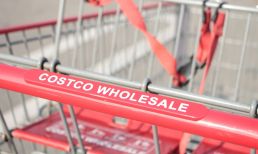Brands use loyalty programs to increase sales, acquire and retain members, enhance the customer experience and create advocates. Return on investment (ROI) is foremost among any brand’s metric to measure the efficiency and performance of a loyalty program. Since every loyalty program is different, calculating your ROI can be challenging.
The purpose of investing in loyalty programs is so brands can strengthen their customer relationships, gather key insights and grow revenue. Loyalty terms like acquisition, retention and usage are important in this process.
As brands dive deeper into improving their digital transformations, here are five key metrics that can elevate a brand’s ROI.
Member Engagement
This metric is the most important one for any free or paid loyalty program. If members aren’t engaged, they won’t use the program very often or at all.
This metric measures the program benefits your members are using. A high figure shows that members are enjoying the program’s benefits thoroughly. If this rate is lower, it’s time to find out what’s causing it and make suitable adjustments.
For example, Albertsons Companies saw significant increases in digital engagement in its fourth quarter and full year fiscal 2023 financial results. According to the results, digital sales soared 24%. This massive increase was attributed to the chain’s loyalty program, which saw its membership grow by 16% to nearly 40 million.
Advertisement: Scroll to Continue
Purchase Frequency
Successful loyalty programs will result in your members spending more as they shop more.
As members use the program and earn rewards, they are likelier to shop more frequently. For example, that’s why Amazon Prime members spend nearly twice as much per year on average than non-Prime members. If you have a great loyalty program, members are likely to shop more frequently. But if this number is flat, your members might not see enough value or differentiation to engage regularly.
Two years ago, fast-casual brand Rubio’s Restaurants, which has more than 150 restaurants across California, Nevada and Arizona, launched a new loyalty program to give members more visibility and choice. Rubio’s Director of Loyalty & Digital Experience Adam Fox spoke with PYMNTS about how these changes can drive purchase frequency in the face of rising food prices.
“The reason we went with this type of program is listening to our guests,” he said. “They wanted a program where they can redeem for what they wanted to. So, this just gives our guests so much choice and flexibility whether they want to save up for free entrees or if they want if they want to feed their kids for free.”
Churn Rate
Churn refers to the percentage of members that cancel their memberships per month.
A high churn rate is usually a symptom of members not getting value out of your program or getting the wrong types of benefits. If this number is high, you should survey your members and examine your data to see what benefits they’re using and where they want more value.
One way to improve your loyalty program churn rate is to offer experiential benefits. For instance, Six Flags, an operator of theme parks and water parks, launched a metaverse experience on Roblox that includes a rewards program. Users can collect “coastercoins” in the new metaverse experience and redeem them for Six Flags rewards and activities at the company’s physical parks.
Reward Redemption Rate
This metric is critical for any loyalty program. If members aren’t engaged, they won’t use your program often or ever. This shows which program benefits your members are using and how fast they’re using them. A high figure shows that members are enjoying the program’s benefits thoroughly. If the rate is low, it’s time to re-evaluate. Do members even want the rewards you’re offering? Are there certain benefits that can be replaced with others?
In April, JCPenney launched its Rewards and Credit Program, a free loyalty program for customers. JCPenney has more than 20 million Rewards members that shop there an average of five times per year. The new program will double the rate at which Rewards members earn points, ensuring every member receives money back each year. The program is free to join and guarantees $20 in CashPass Rewards.
Keep It Simple
If your loyalty program’s signup process is too complex, consumers will look elsewhere. A loyalty program must be simple to use to spark elevated engagement.
Earlier this year, CVS listened to its customers and simplified its loyalty program. Instead of members managing four separate programs, CVS officials consolidated the program into a single membership with two tiers.
Those aren’t the only relevant five metrics, but they’re arguably the most important. By diligently tracking and optimizing member engagement, purchase frequency, churn rate, reward redemption and program simplicity, brands can significantly enhance the ROI of their loyalty programs.
These metrics provide crucial insights into customer behavior and preferences, enabling brands to fine-tune their strategies for maximum impact. As digital transformations continue to evolve, leveraging these key metrics will not only boost loyalty program performance but also foster deeper customer relationships and drive long-term growth.




